Yellow Buckeye
(Aesculus flava Aiton)
Description
Yellow buckeye or sweet buckeye belongs to the soapberry family (Sapindaceae) but was previously included in the horse chestnut family (Hippocastinaceae) ¹. It has also undergone a change in species name as it was formally called Aesculus octandra ¹. It is a medium size tree of 50 to 75 feet but may reach 90 feet in optimal conditions ². The bark of mature trunks forms large, grayish-brown, flat scales. Young stems have large, orange lenticels (pores) ³. The leaves are opposite with two leaves attached at the same point on the stem. Leaves are palmately compound with 5 to 7 leaflets attached to a long leaf petiole. Each leaflet is 4 to 6 inches long and serrated ³. The flowers are yellow and in many-flowered clusters of 4 to 6 inches long ³. Flowers may be perfect with both male and female structures or imperfect with only stamens 5 . The fruit is a 1 to 3-inch sphere that is smooth on the outside and contains 1 to 3 shiny brown seeds ². The seeds have a large white attachment that gives it the common name buckeye. The seeds are poisonous ³.
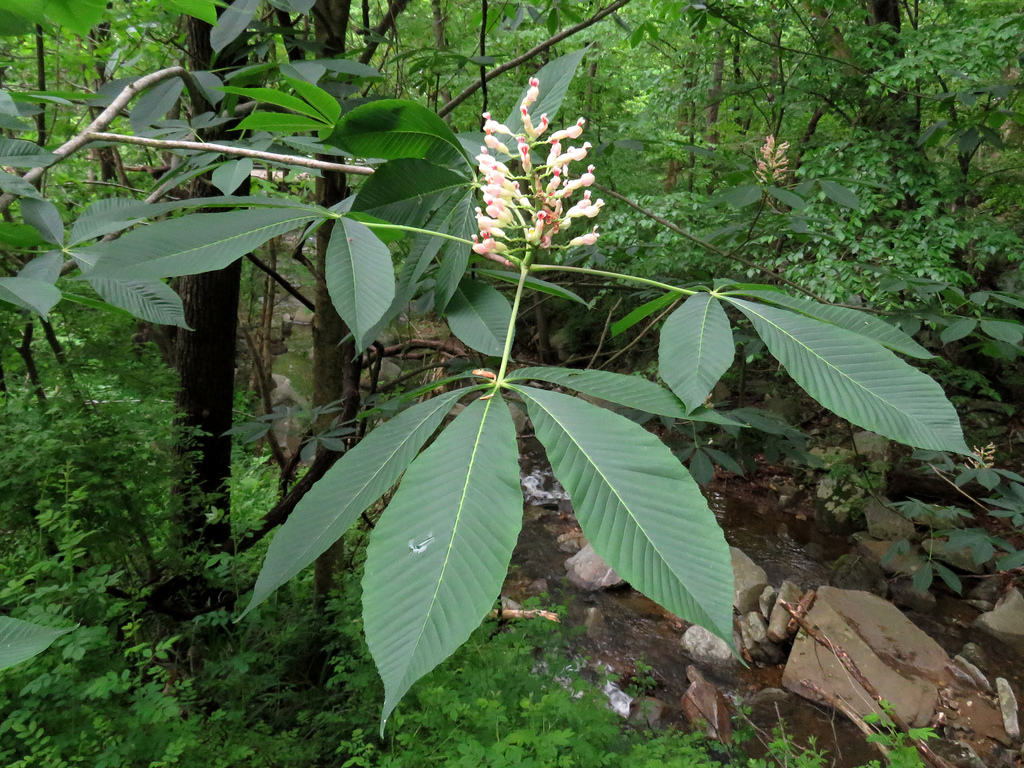
Opposite, palmately compound leaves of yellow buckeye. J. Emm, Maryland Biodiversity Project 4
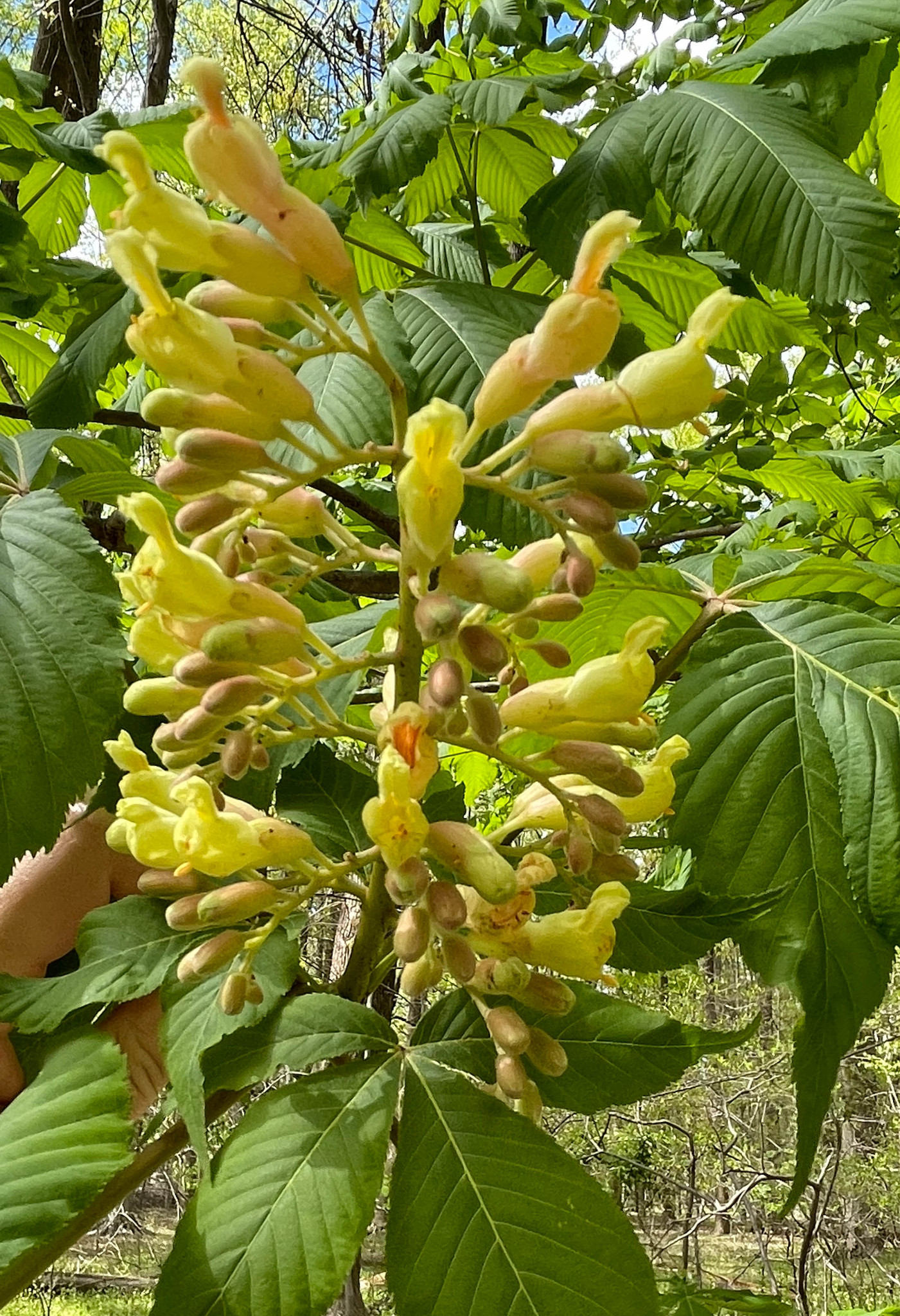
Flowers of yellow buckeye. J. Hill, Maryland Biodiversity Project 4
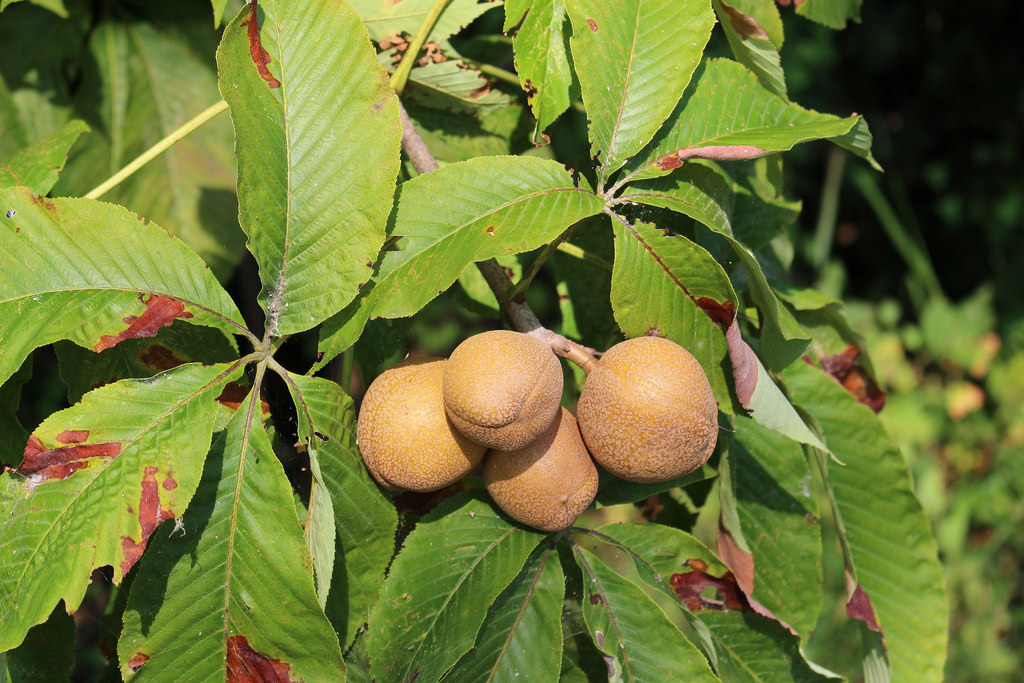
Fruits of yellow buckeye. D. Webb, Maryland Biodiversity Project 4
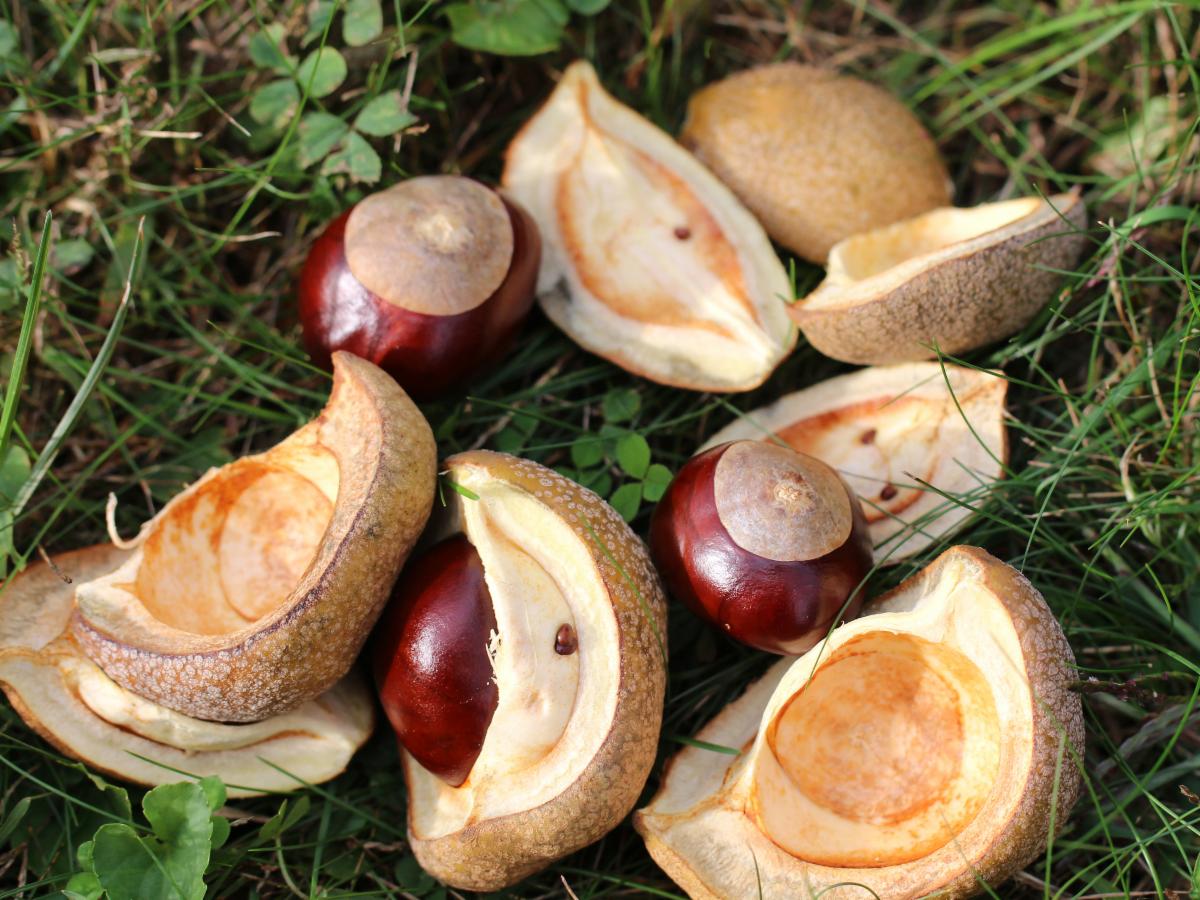
Fruits and seeds of yellow buckeye. Toadshade Wildflower Farm 6
Distribution
Yellow buckeye is found along stream valley bottoms and slopes from in the Appalachian Mountains from southwestern Pennsylvania to northern Alabama and along the Ohio River Valley 5. In Maryland it is found near Hagerstown, in St. Mary’s County and in the Baltimore-Washigton D.C. region, suggesting that it may be an escape from cultivation 4.
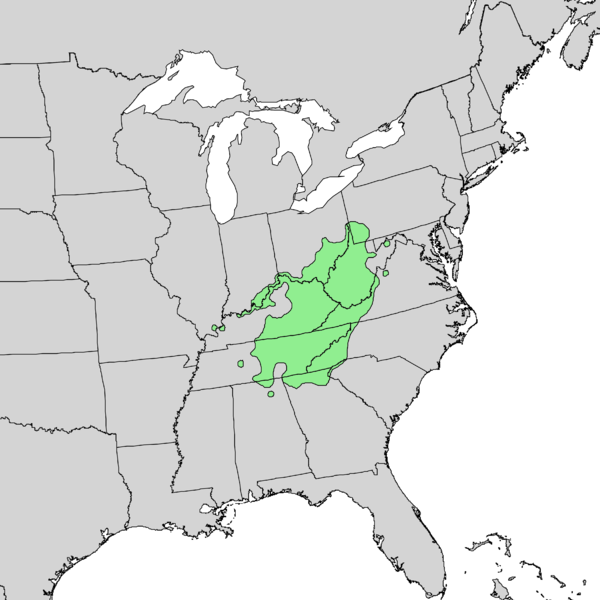
Native range of yellow buckeye. USDA 7
Ecological Importance
Flowers are visited by butterflies, bees and hummingbirds³.
Economic Importance
The wood is the softest of all North American hardwoods making it undesirable for most lumber uses 5. It can be used for making paper and carving woodenware 5. The poisonous seeds are inedible.
Threats
Yellow buckeye is relatively free of diseases and fungal infestation and has no major insect enemies 5.
Interesting Facts
- Yellow buckeye is one of the first trees to leaf out in the spring 5.
- People use to carry the seeds for luck ³.
- Young shoots and seeds contain glycosides, specifically saponin and aesculin, which are poisonous 3,5. Symptoms include paralysis, vomiting, diarrhea which can lead to death in animals, humans and livestock ³.
- The northern boundary of its distribution follows the southern edge of the Wisconsin glaciation 5.
References
- The Morton Arboretum: Yellow buckeye
- Missouri Botanical Garden: Aesculus flava
- North Carolina Extension: Aesculus flava
- Maryland Biodiversity Project: Yellow buckeye
- USDA Forest Service: Yellow buckeye
- Toadshade Wildflower Farm
- Wikimedia Commons: Aesculus flava
Contributed by J. Hull
